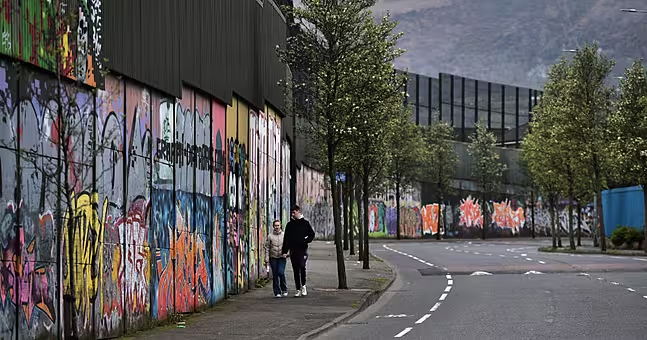It is a powerful and radical intervention in our political discourse that will change how people see the IRA and Sinn Féin.
One distinct impression I get from the public and social media reaction is that the version of Gerry Adams created here is one that will stick, even that his credibility as a peacemaker is now irreparably tainted.
But what are you saying if you are criticising him for his machinations? That you would rather he hadn’t steered the IRA away from the direction the ideological purists wanted to take?
That the whole peace process is a con because it doesn’t actually fit the vision of that minority of enraged young men who, fifty years ago, thought they could fashion a new Ireland out of murder and sabotage?
I don’t mind that, as one critic said, it ‘humanises the IRA’ because they were human, and they were as brutal and fanatical as humans can be.
This is perhaps the best drama we have had yet on the IRA campaign.
People around the world will watch it as entertainment and they will learn more than they were ever otherwise likely to about those ghastly years.
FAQs
1. Why is this intervention considered powerful in political discourse?
This intervention offers a unique perspective on the IRA and Sinn Féin, challenging traditional narratives and prompting viewers to reconsider their perceptions.
2. How does the portrayal of Gerry Adams impact his public image?
The portrayal of Gerry Adams in this drama has raised questions about his credibility as a peacemaker, leading to a shift in how he is viewed by the public.
3. What is the significance of humanizing the IRA in this context?
Humanizing the IRA allows for a deeper exploration of their motivations and actions, shedding light on the complexities of the conflict.
4. What can viewers gain from watching this drama?
Viewers will gain a better understanding of the history and impact of the IRA campaign, providing insight into a turbulent period in Irish history.
5. How does this drama contribute to the broader discourse on peace processes?
This drama prompts viewers to consider the complexities and challenges of peace processes, highlighting the tensions between ideology and pragmatism.
6. What sets this drama apart from other portrayals of the IRA?
This drama offers a nuanced and compelling portrayal of the IRA, delving into the personal and political dynamics that shaped the conflict.
7. How does social media reaction influence the reception of this drama?
Social media reaction can shape public perception of the drama, influencing how it is viewed and discussed in online communities.
8. What makes this drama a valuable contribution to the entertainment industry?
This drama challenges traditional narratives and offers a fresh perspective on a controversial subject, making it a thought-provoking and engaging piece of entertainment.
9. How does the portrayal of the IRA in this drama differ from previous representations?
This drama presents a more humanizing and complex portrayal of the IRA, moving beyond stereotypes to explore the motivations and actions of its members.
10. What can viewers take away from this drama in terms of historical understanding?
Viewers can gain a deeper understanding of the historical context and impact of the IRA campaign, providing insight into the complexities of conflict and peace processes.
Conclusion
In conclusion, this drama offers a powerful and thought-provoking intervention in our political discourse, challenging traditional narratives and prompting viewers to reconsider their perceptions of the IRA and Sinn Féin.

